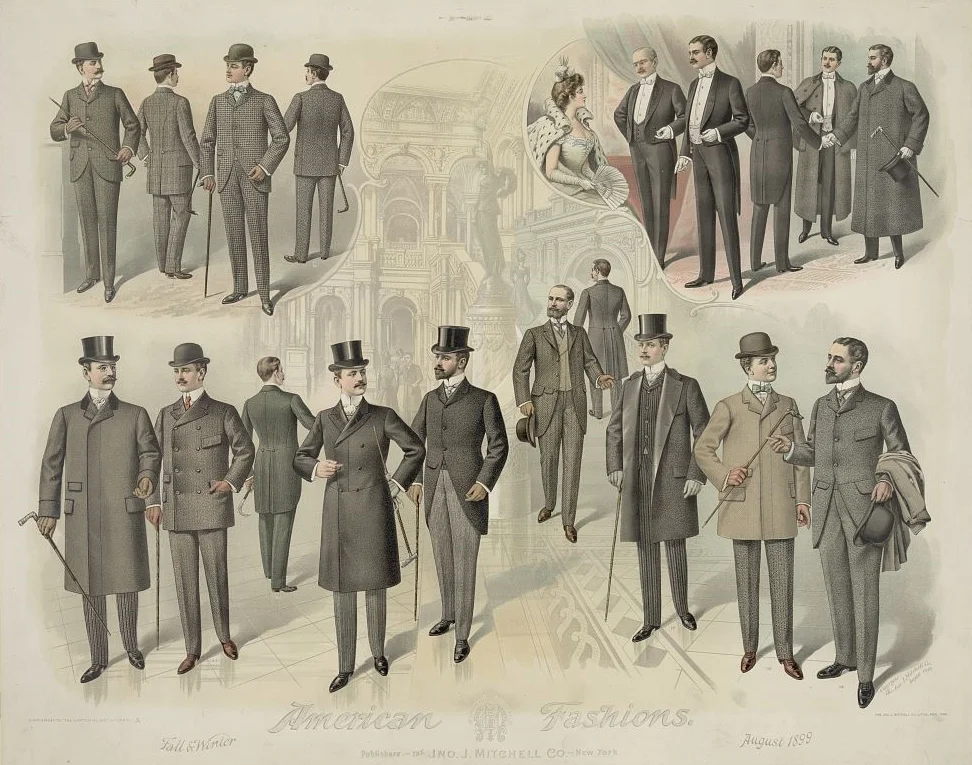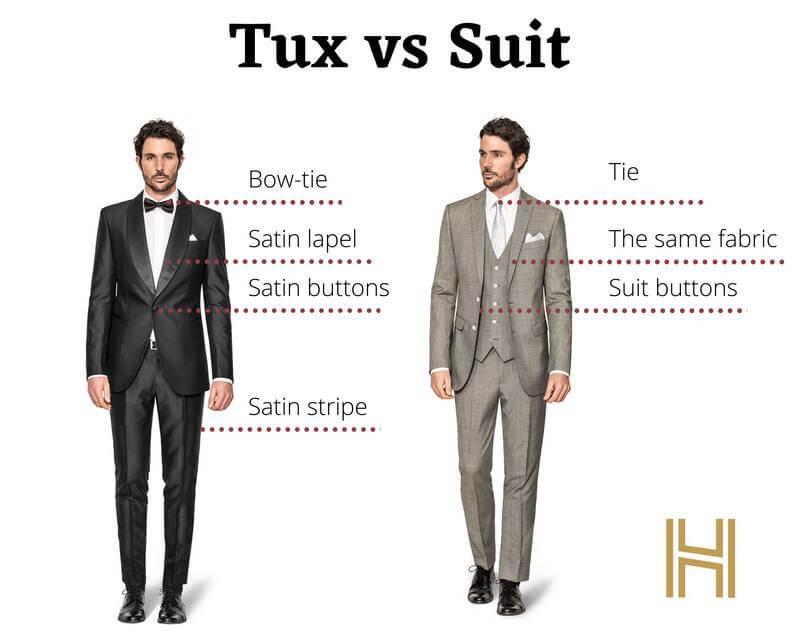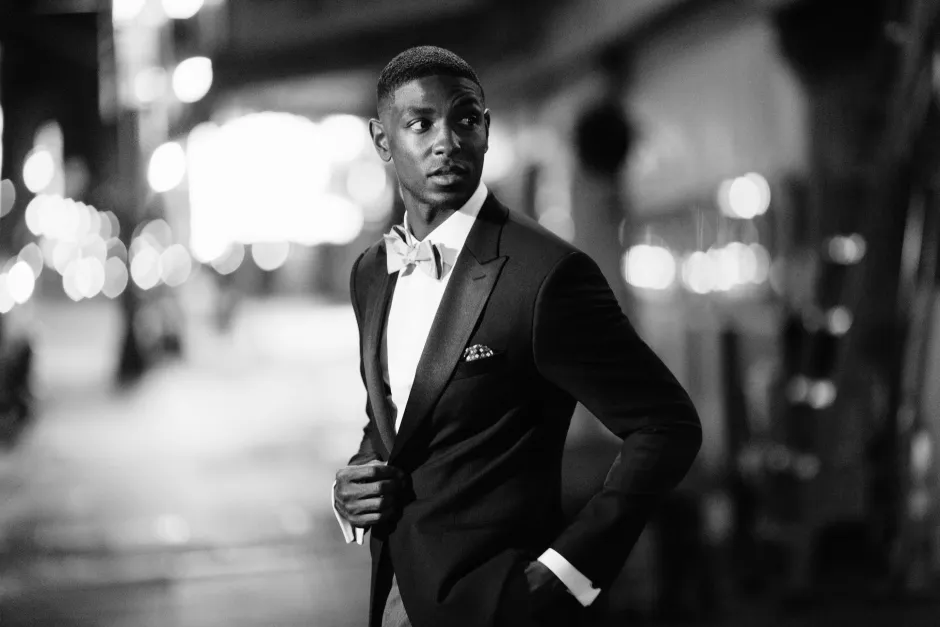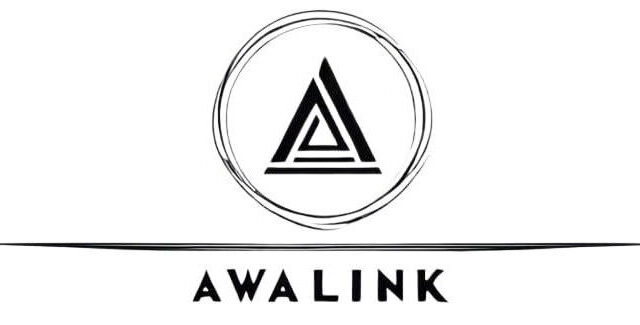If you want to dress sharp and make a good impression, knowing when to wear a suit and when to wear a tuxedo is key. While both look great, they’re meant for different occasions, and knowing the difference will help you pick the right one when it counts.

Let’s take a look at the history of both suits and tuxedos to understand their purpose and when to wear each.
Suit – The every day formal
The suit, as we know it today, traces back to the 19th century. Originally designed for daily wear by men in high society, suits became the standard for business and formal events. Over time, the suit evolved into the versatile outfit it is today, worn everywhere from the office to casual gatherings.
A suit typically consists of a matching jacket and pants, worn with a dress shirt and sometimes a tie. It’s the perfect outfit when you need to look sharp without being overly formal.

What make a Suit:
- Material: Historically, suits were made from wool, and this tradition has continued, although you can now find suits in cotton and linen as well.
- Lapel Style: The most common lapel style for suits is the notch lapel, which became popular in the mid-20th century. It’s simple, classic, and works for almost any occasion.
- Shirt and Accessories: Suits offer a lot of flexibility in how you style them. Traditionally worn with a tie, modern suits can be paired with an open-collar shirt for a more relaxed look.
- Occasions: A suit is suitable for everything from business meetings to weddings and even dinners with friends. Its versatility is why it’s a staple in any man’s wardrobe.
The suit has become a symbol of professionalism, sophistication, and style, adapting through the years to fit a range of formal and semi-formal occasions.
Tuxedo – The old time luxury
The tuxedo has a more formal history, originating in the late 19th century as an alternative to the traditional tailcoat for evening wear. It was first introduced at Tuxedo Park, an upscale country club in New York, where it quickly became the go-to outfit for formal dinners and black-tie events.
Unlike the suit, the tuxedo has maintained its role as formal evening wear. It’s still the standard for black-tie events, weddings, and galas.

What make a Tuxedo:
- Material: Tuxedos were originally made from high-quality wool with silk or satin accents, which still hold true today. Satin is typically used on the lapels, buttons, and sometimes down the sides of the trousers.
- Lapel and Satin Details: The defining feature of a tuxedo is the satin lapel. It’s either peaked or shawl, both giving a sleek, polished appearance.
- Shirt and Bow Tie: Traditionally, tuxedos are paired with a white pleated dress shirt and a black bow tie. Over the years, the bow tie has remained a symbol of the tuxedo’s elegance.
- Occasions: Tuxedos are reserved for black-tie events and formal occasions, where looking sophisticated is the priority.
The tuxedo has held onto its role as the pinnacle of formal evening wear, symbolizing class, elegance, and importance.
Key Differences Between a Suit and a Tuxedo

Here’s what separates a suit from a tuxedo:
- Satin Details: Tuxedos have satin accents on the lapels, buttons, and sometimes the pants, whereas suits are typically made of the same fabric throughout.
- Bow Tie vs. Regular Tie: Tuxedos are worn with a bow tie, while suits are more commonly paired with a regular tie or no tie at all.
- Occasions: Suits are versatile and can be worn at a wide range of events, while tuxedos are reserved for formal, black-tie occasions.
- Shirt Style: A tuxedo is traditionally worn with a white dress shirt, often pleated, while suits allow more flexibility in shirt color and style.
- Shoes: Tuxedos are typically paired with patent leather shoes, while suits can be worn with a variety of shoe styles, from oxfords to loafers.
When to Wear a Suit vs. a Tuxedo

- Weddings: If the dress code doesn’t specify black-tie, a suit is usually the best choice. If the event calls for black-tie, go with a tuxedo.
- Business or Formal Meetings: A suit is appropriate for business settings and formal meetings. A tuxedo would be too formal here.
- Black-Tie Events: For black-tie events, always wear a tuxedo. This is where it shines and shows you understand the dress code.
- Semi-Formal or Casual Events: A suit is the right choice for semi-formal or more casual events. It gives you a sharp, polished look without being too formal.
Final Thoughts
Understanding the history and purpose of suits and tuxedos helps you know when to wear each. A suit is versatile, making it suitable for many occasions, while a tuxedo is reserved for formal events where elegance and tradition are key.

Knowing when to wear a suit and when to step it up with a tuxedo is an important part of dressing well. With this knowledge, you’ll always be prepared to dress for any event with confidence.



